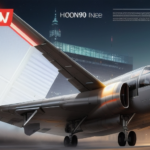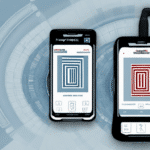Inateck BCST-70 vs Honeywell Xenon 1900g: Comprehensive Barcode Scanner Comparison
Barcodes are integral to modern operations, found in environments ranging from retail stores and libraries to industrial settings. Barcode scanners are essential devices designed to read barcodes efficiently and accurately. With various models available, selecting the right scanner can be challenging. This article compares the Inateck BCST-70 and the Honeywell Xenon 1900g barcode scanners, two leading models, to assist you in making an informed purchasing decision.
Overview of Barcode Scanners
Barcode scanners utilize technologies such as laser and imaging to read barcodes and transmit the encoded information to devices like computers, point-of-sale (POS) systems, or mobile devices. These scanners enhance operations in various applications including inventory tracking, customer checkout processes, and shipment processing. Both the Inateck BCST-70 and Honeywell Xenon 1900g are renowned for their scanning precision, speed, and user-friendliness.
According to a Statista report, the global barcode market is expected to grow significantly, highlighting the increasing reliance on barcode technology across industries. In sectors like healthcare, barcode scanners track patient information, manage medication administration, and oversee medical equipment inventory. In retail, they are pivotal for managing inventory levels, tracking sales, and streamlining the checkout process.
Types of Barcode Scanners
- Handheld Scanners: Portable and held by the user to scan barcodes.
- Fixed-Mount Scanners: Stationarily installed to scan barcodes as items pass by.
- Presentation Scanners: Designed to scan barcodes presented to them, typically at checkout counters.
Inateck BCST-70 Barcode Scanner
Design and Durability
The Inateck BCST-70 is a versatile handheld barcode scanner suitable for applications in retail, warehousing, and inventory management. Its ergonomic design ensures comfort during prolonged use, while its ability to scan all major 1D barcodes and low-contrast codes from up to 20 inches enhances its versatility.
Built for durability, the BCST-70 withstands drops from heights up to 5 feet, making it ideal for demanding work environments. Its robust battery life offers up to 30 hours of continuous scanning on a single charge, reducing downtime and maintenance costs.
Connectivity and Compatibility
Connectivity is seamless with options including Bluetooth and USB, facilitating easy integration with various devices and systems. This adaptability makes the Inateck BCST-70 a dependable choice for businesses seeking to improve productivity and accuracy.
Honeywell Xenon 1900g Barcode Scanner
Advanced Imaging Technology
The Honeywell Xenon 1900g stands out in the barcode scanner market with its advanced Adaptus Imaging technology, capable of reading both 1D and 2D barcodes, including those displayed on mobile device screens. This feature makes it particularly effective for retail POS applications.
Build Quality and User Interface
Engineered for durability, the Xenon 1900g is designed to endure multiple drops and impacts, ensuring longevity in high-traffic environments. Its user-friendly interface includes a bright display for real-time feedback and customizable buttons for tailored functionality.
System Compatibility
Compatibility is a key strength, with seamless integration across Windows, Mac, and Linux systems. The plug-and-play design simplifies installation, eliminating the need for additional software or drivers.
Design and Build Quality Comparison
Ergonomics and Portability
Both scanners boast durable constructions suitable for rugged environments. The Inateck BCST-70 features a rubberized finish for an ergonomic grip, while the Honeywell Xenon 1900g offers an adaptable design for comfortable handling and versatile scanning angles.
The BCST-70's compact form factor makes it highly portable, whereas the Xenon 1900g's larger size contributes to a more secure and comfortable hold during extended use.
User Interface
Interface-wise, the Inateck BCST-70 provides a straightforward and intuitive user experience, whereas the Honeywell Xenon 1900g offers advanced interface options for greater customization and control over scanning settings.
Scanning Performance and Accuracy
Speed and Range
The Inateck BCST-70 excels in speed, capable of scanning up to 300 barcodes per second. However, the Honeywell Xenon 1900g outperforms in accuracy with its Adaptus Imaging technology, which effectively reads low-contrast and damaged barcodes. The BCST-70 operates effectively within a 20-inch scanning range, while the Xenon 1900g extends up to 33 inches.
Accuracy in Challenging Conditions
In scenarios involving damaged or poorly printed barcodes, the Xenon 1900g maintains a higher success rate due to its superior decoding algorithms, whereas the BCST-70 may experience slower scanning rates and occasional errors.
Durability in Harsh Environments
Regarding durability, the BCST-70 offers enhanced resilience with a shock-resistant exterior capable of withstanding drops from up to 6 feet, making it more suitable for environments prone to rough handling compared to the Xenon 1900g.
Features and Functionalities
Inateck BCST-70 Features
- Hands-Free Scanning: Automatically switches between handheld and presentation modes based on orientation, ideal for busy retail settings.
- Long-Lasting Battery: Supports up to 30,000 scans on a single charge, minimizing the need for frequent recharging.
- High Scanning Speed: Performs up to 500 scans per second, ensuring rapid and efficient barcode processing.
- Plug-and-Play Setup: Simplifies installation without requiring additional software or drivers.
- Multi-Device Compatibility: Works seamlessly with laptops, tablets, and smartphones across various platforms.
Honeywell Xenon 1900g Features
- Adaptus Imaging Technology: Enables accurate scanning of both 1D and 2D barcodes, including those on mobile screens.
- Motion Tolerance: Reduces scanning inaccuracies when barcodes are in motion.
- Durable Construction: Withstands drops from up to 6 feet, suitable for industrial and warehouse environments.
- Ergonomic Design: Ensures comfort during extended use, minimizing user fatigue.
- Advanced Scanning Engine: Capable of reading damaged or poorly printed barcodes, enhancing reliability.
Ease of Use
User Experience
Both the Inateck BCST-70 and Honeywell Xenon 1900g prioritize user-friendliness:
- Inateck BCST-70: Features an ergonomic design and hands-free scanning, suitable for prolonged use. Its large scanning window allows barcode reading from a distance, reducing the need for precise aiming.
- Honeywell Xenon 1900g: Incorporates an adjustable design for comfortable handling at various angles and a bright LED aimer for visibility in low-light conditions.
Device Compatibility
Compatibility is another factor; the BCST-70 supports a wide array of devices and operating systems, including Windows, Mac, and Android. In contrast, the Xenon 1900g is optimized for desktop use and may require additional software for integration with other platforms.
Pricing and Value for Money
The Inateck BCST-70 is positioned as a more budget-friendly option compared to the Honeywell Xenon 1900g. Both scanners deliver exceptional features and performance, but the choice hinges on specific business needs and budget constraints.
While the Honeywell Xenon 1900g commands a higher price, its superior durability and advanced scanning capabilities may justify the investment for businesses operating in harsh environments or requiring high accuracy.
Conversely, the Inateck BCST-70 offers excellent value for businesses seeking cost-effective solutions without compromising on essential features.
Real-World Applications
- Healthcare: Tracking patient information, medication administration, and managing medical equipment inventory.
- Retail: Managing inventory levels, tracking sales, and streamlining checkout processes.
- Warehousing and Logistics: Processing shipments, inventory management, and tracking goods in transit.
- Manufacturing: Monitoring production processes and inventory control.
The Inateck BCST-70 is ideally suited for industrial setups requiring durable and efficient scanning, while the Honeywell Xenon 1900g excels in retail POS applications where accuracy and speed are paramount.
Pros and Cons
Inateck BCST-70
Pros:
- Budget-friendly
- Ergonomic design
- Hands-free scanning
- Long battery life with up to 30,000 scans on a single charge
Cons:
- Limited scanning range compared to Honeywell Xenon 1900g
- May struggle with damaged barcodes
Honeywell Xenon 1900g
Pros:
- Adaptus Imaging technology for superior scanning accuracy
- Capability to scan mobile device screens
- Durable build quality suitable for industrial use
- Adjustable design for comfortable use
Cons:
- Higher price point compared to Inateck BCST-70
- Primarily designed for desktop use, may require additional setup for other devices
Conclusion: Choosing the Right Barcode Scanner for Your Business
Both the Inateck BCST-70 and Honeywell Xenon 1900g barcode scanners offer robust features tailored to different business needs. The Inateck BCST-70 is a cost-effective solution with an ergonomic design and hands-free capabilities, making it ideal for industrial environments. On the other hand, the Honeywell Xenon 1900g, though more expensive, provides advanced scanning technology, superior durability, and flexibility, making it well-suited for retail POS applications.
Your decision should be based on specific requirements, budget considerations, and the intended application environment. For businesses prioritizing cost and basic functionality, the Inateck BCST-70 is a solid choice. However, for those needing advanced scanning capabilities and enduring performance in demanding settings, the Honeywell Xenon 1900g is a worthwhile investment.








